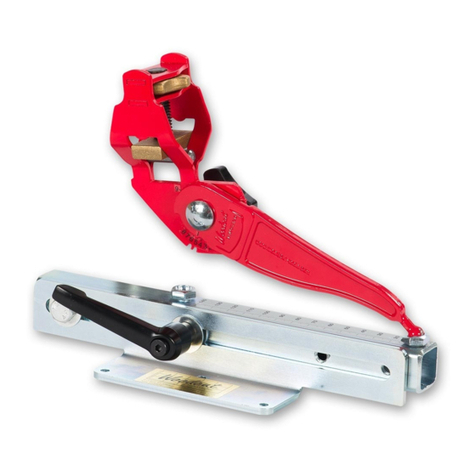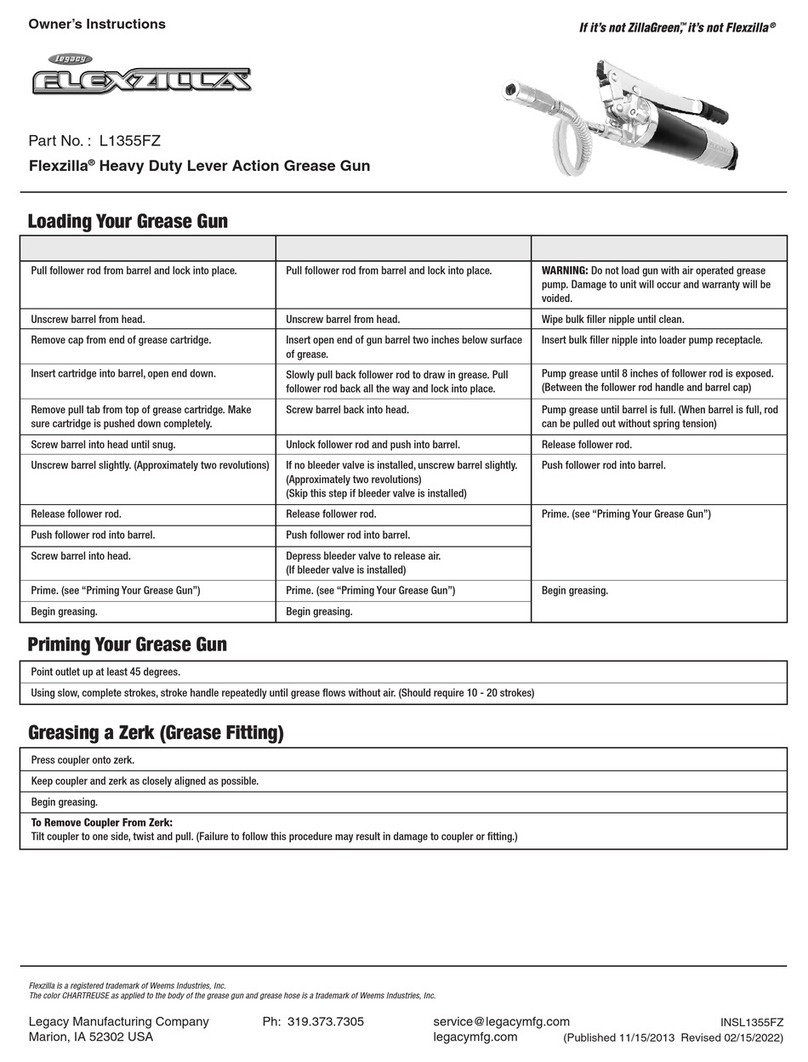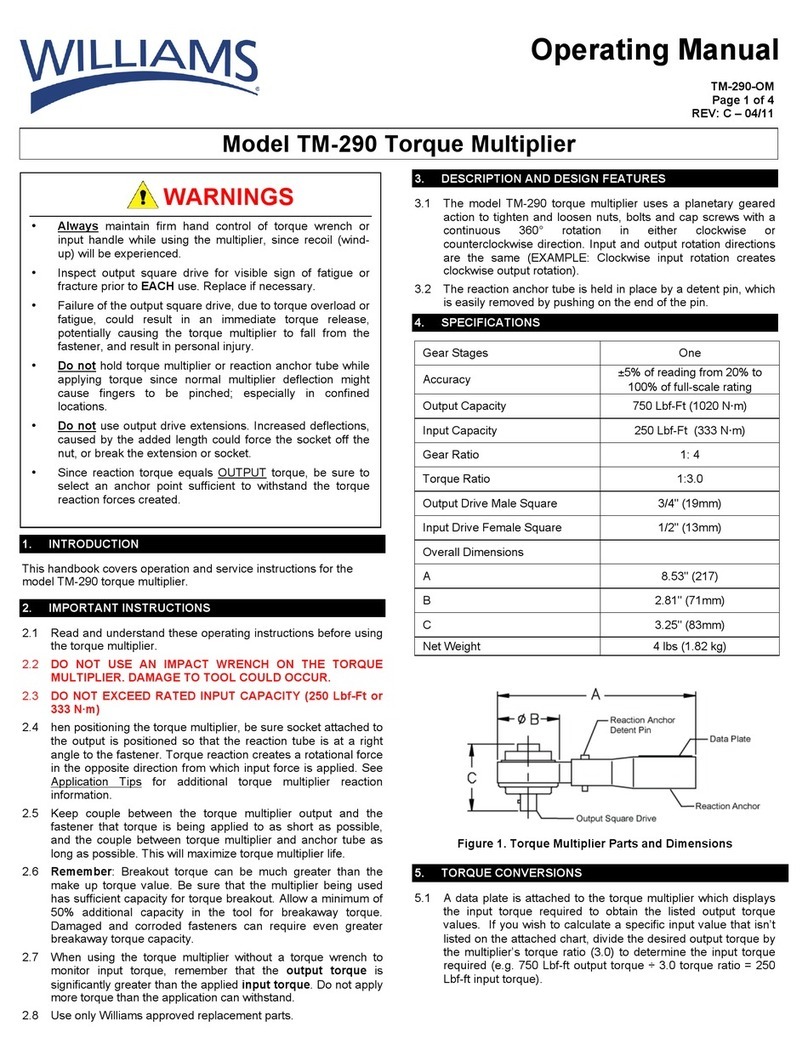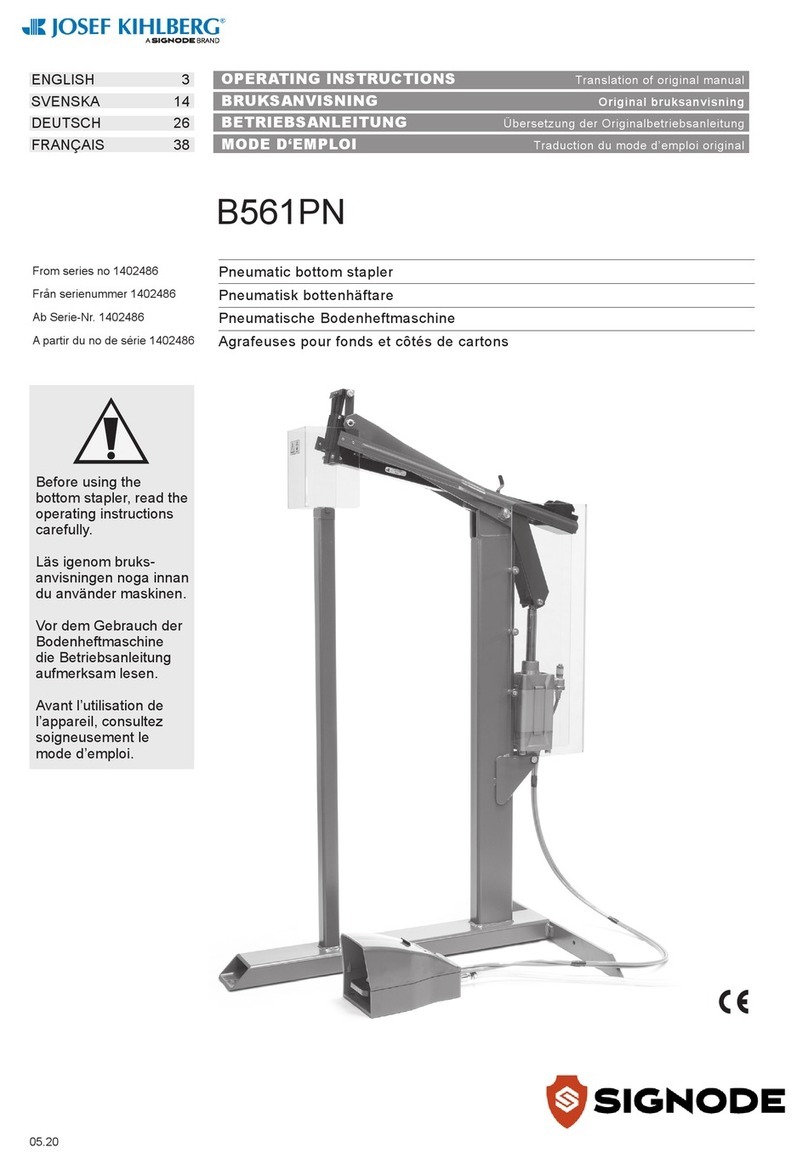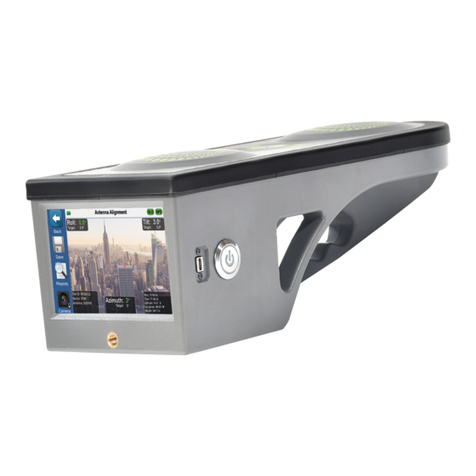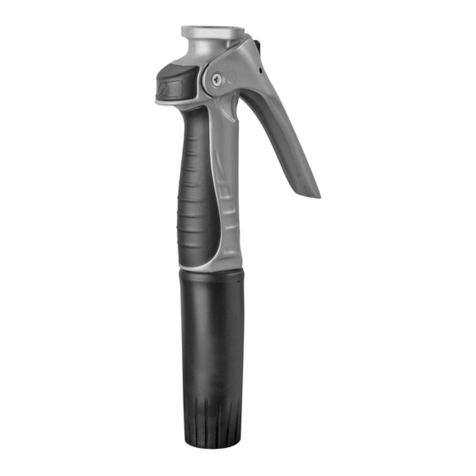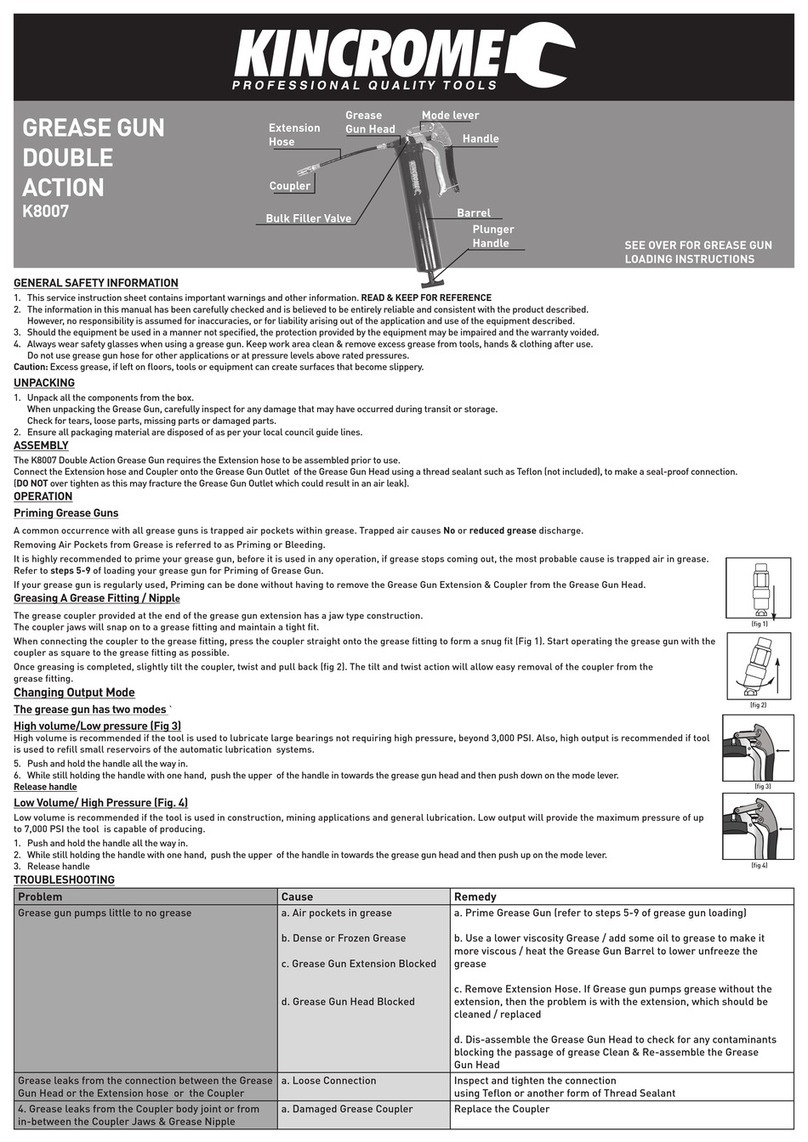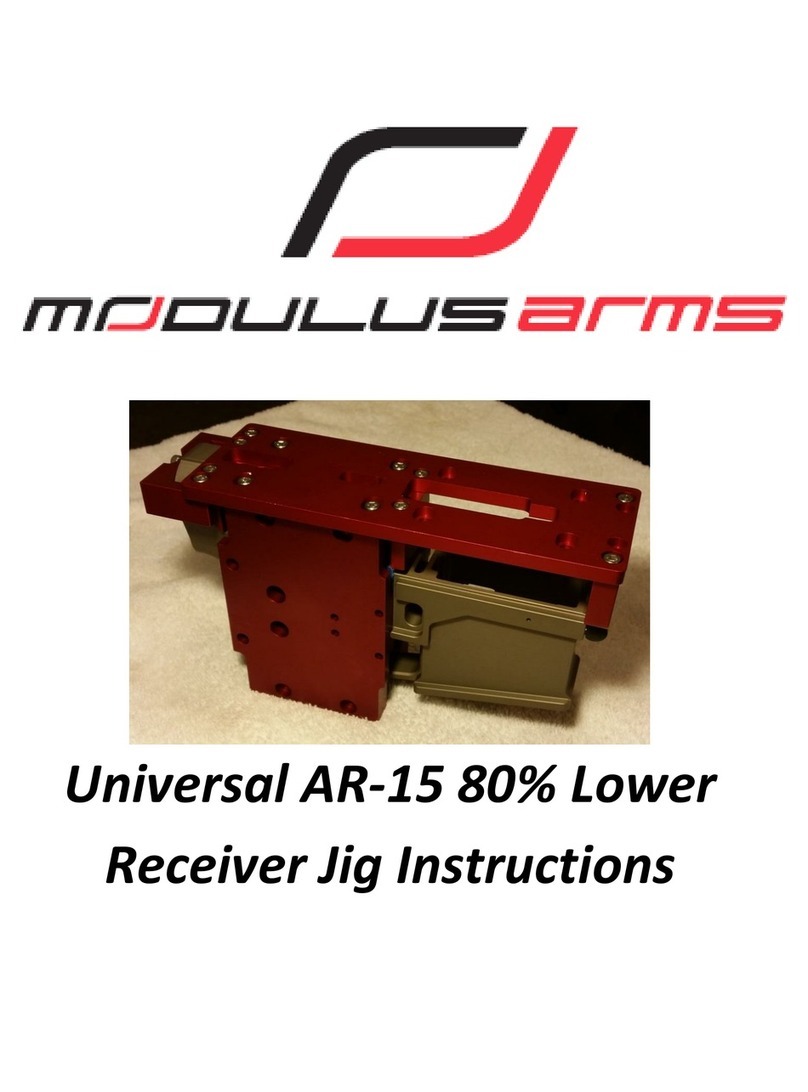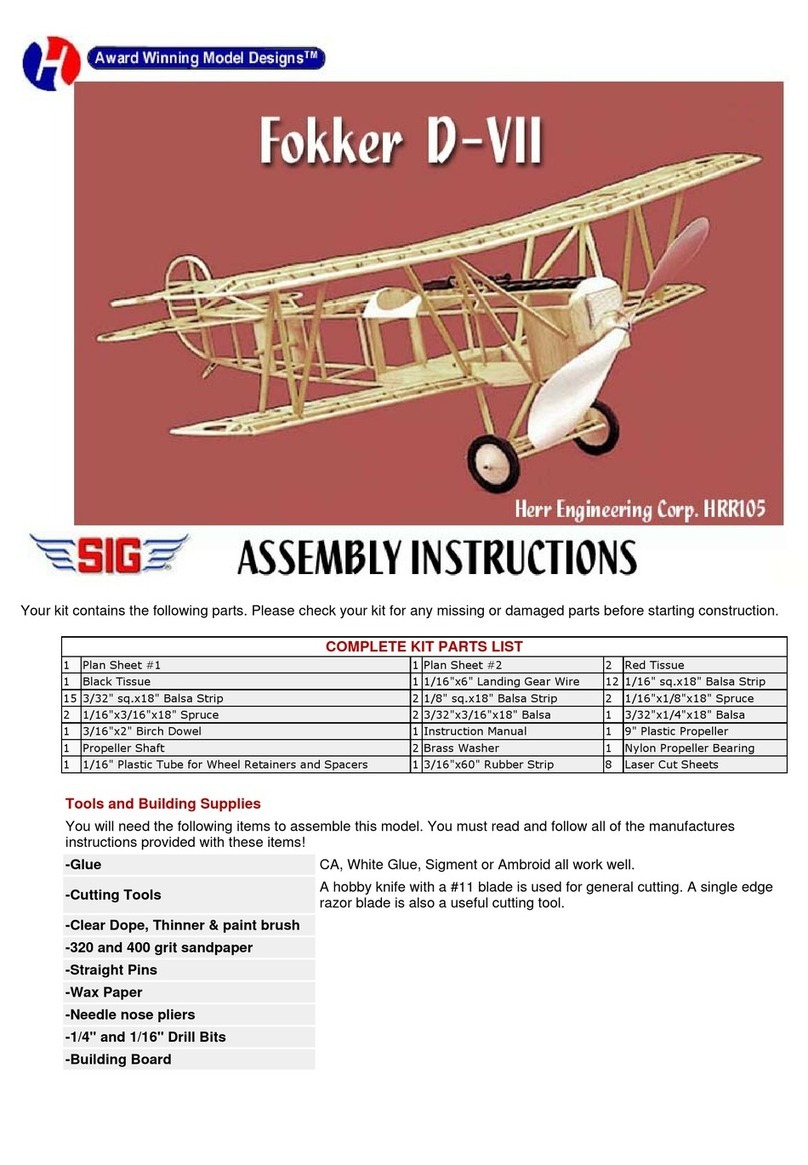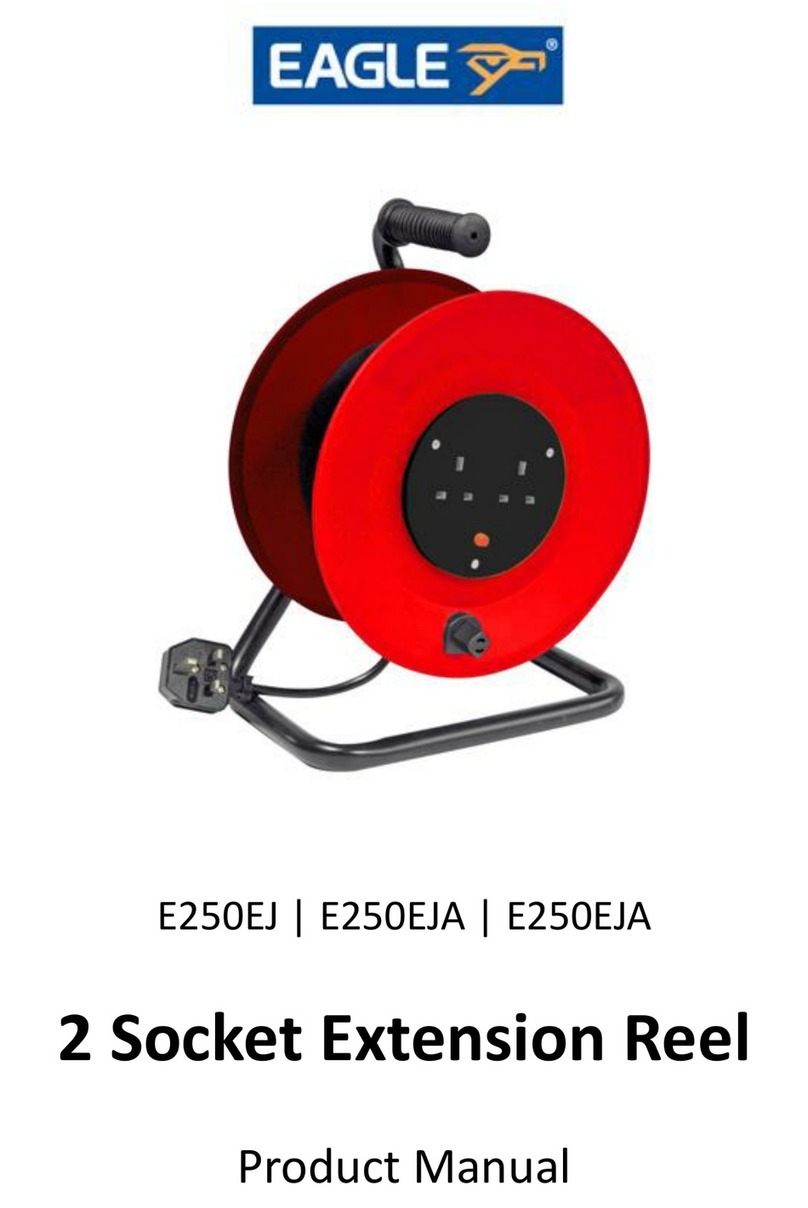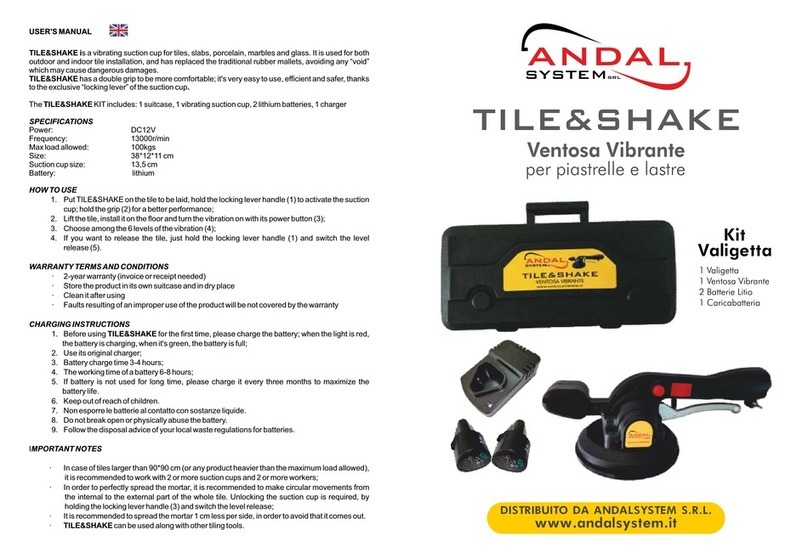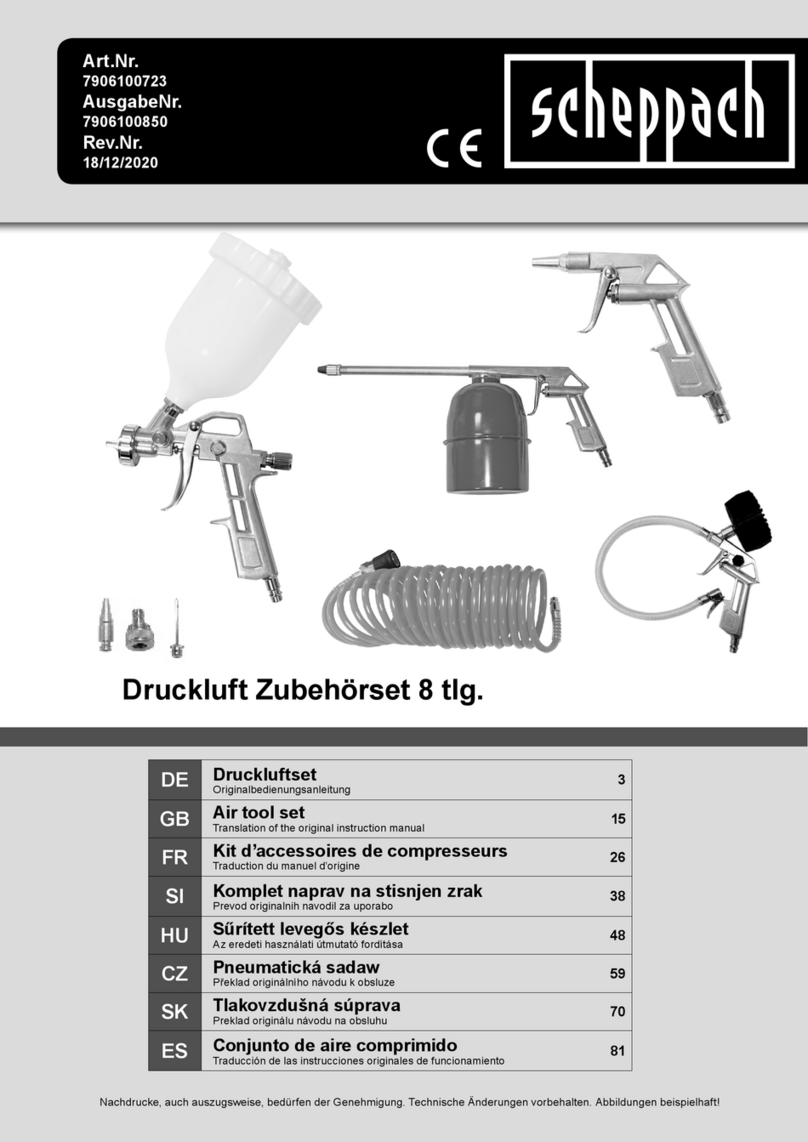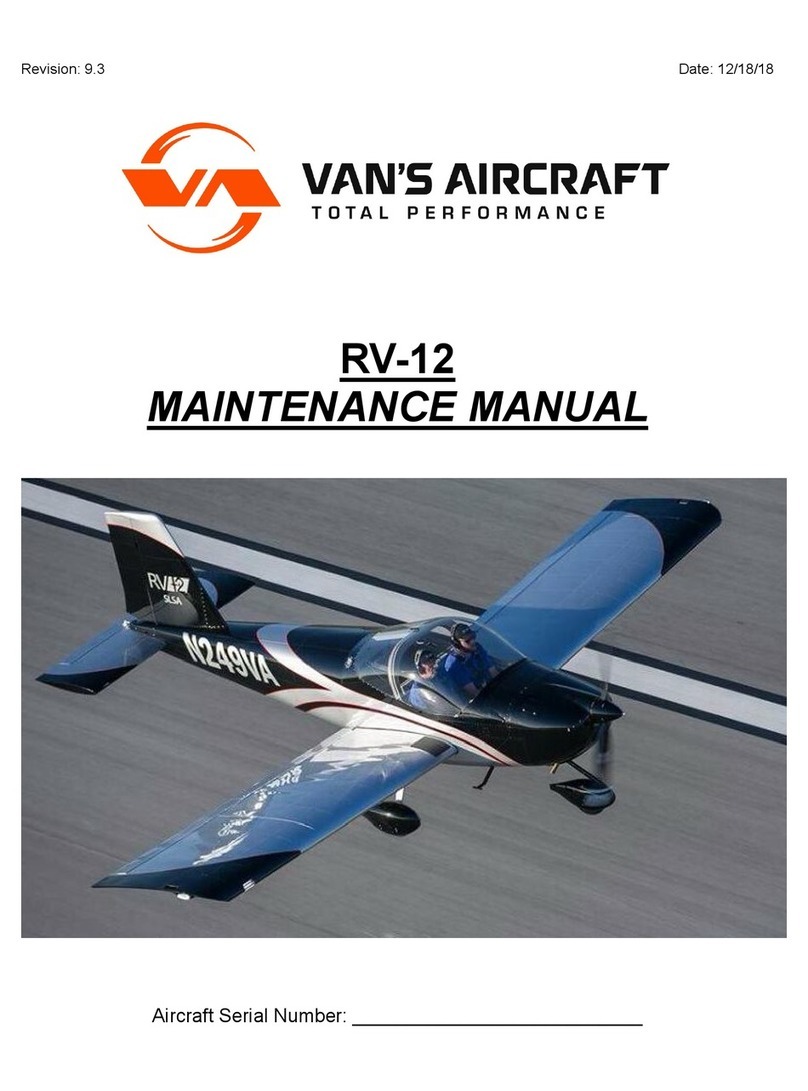Jobsite CT2836 Operation instructions

4 IN 1 MULTI-FUNCTION PETROL GARDEN TOOL
CT2836
ORIGINAI INSTRUCTION
WARNING
•Before using our products, please read this
manual carefully to understand the proper use
of your unit. Keep this manual handy.
•This product is of a special type designed
especially for garden service. It is only to be
used by a trained operator.
Cannon Tools Limited
Address: 20 Station Road, Rowley Regis, West Midlands, B65 0JU.UNITED KINGDOM
SAVE THESE INSTRUCTIONS FOR REFERENCE

EC DECLARATION OF CONFORMITY
We CANNON TOOLS LTD
20 Station Road, Rowley Regis, West Midlands, B65 0JU.U.K
Declare that the following machine complies with the appropriate basic safety
and health requirements of the EC Directive based on its design and type, as
brought into circulation by us.
In case of alteration of the machine, not agreed upon by us, this declaration will
lose its validity.
Product description: 4 IN 1 MULTI-FUNCTION PETROL GARDEN TOOL
Model: CT2836
Applicable EC Directives:
EC Machinery Directive 2006/42/EC
EC Directive of Electromagnetic Compatibility 2014/30/EU
EU Noise Directive 2000/14/EC & 2005/88/EC
Harmonized standards:
EN ISO11806-1:2011, EN ISO 10517:2019,EN ISO 14982:2009
EN ISO 3744:1995, ISO 90207:1995, ISO 11904:1991, ISO 10084:1995
20 Station Road, Rowley Regis, West Midlands, B65 0JU.U.K.
Mr. Gurcharan Tony Singh Sanghera
Managing Director
CANNON TOOLS LTD
2020-11-10

1. TECHNICAL INFORMATION
Engine information
Volume of the fuel tank
1200ml
Max engine speed
9500/min
Engine idling speed
3000/min
Clutch engagement speed
3910 /min
Engine displacement
52 cm³
Maximal power
1.45 kW / 7500/min
Noise level and vibration
Sound power level: 105,4 dB(A)
Guarantee sound power level: 111dB(A)
Sound pressure level: 96,2 dB(A)
Uncertainties K = 3 dB(A)
Vibration
-Front handle:
Idling: 8,303 m/s²
Racing: 7,723 m/s²
-Rear handle:
Idling: 7,737 m/s²
Racing: 6,763 m/s²
-K = 1,5 m/s²
Brush cutter
Cutting diameter
1.4x255mm
Maximum rotational frequency of the spindle
9500/min
Cutting blade
3T
Hedge trimmer
Cutting length
Cutting wide: 24mm;
Cutting range:430mm
Type of the hedge trimmer blade
Double
Maximum rotational frequency of the spindle
9500/min
Grass trimmer
Cutting diameter
430mm
Maximum rotational frequency of the spindle
9500/min
Cutting string head
¢2.5mm max
Pole pruner
Cutting length
10” /25 cm
Maximum rotational frequency of the spindle
9500/min

2. SAFETY INSTRUCTIONS
2.1.1 General warnings
Proper safety precautions must be observed. This unit must be handled carefully.
DO NOT EXPOSE YOURSELF OR OTHERS TO DANGER.
Follow these general rules. Do not permit others to use this machine unless they
are thoroughly responsible and have read, and understand the machine manual
and are trained in its operation.
Always wear safety goggles for eye protection. Dress properly; do not wear
loose clothing or jewellery that could become caught in moving parts of the unit.
Safe, sturdy, non-skid footwear should always be worn. Long hair should be tied
back. It is recommended that legs and feet be covered to protect from flying
debris during operation.
Protective equipment must always be wear during the operation of the tool,
including at least hearing protection, eyes protection, helmet, gloves, and mask
of protection, slip-resistant foot protection, and protective clothes.
Inspect the entire machine for loose parts (nuts, bolts, screws, etc.) and any
damage. Repair or replace as necessary before using the machine. DO NOT
USE any attachment other than the ones recommended by our company.
Serious injury to the operator or bystanders could result as well as damage to
the machine. Ask advice to you dealer of manufacturer. Do not use cutting
attachment such as metal multi-piece pivoting chains and flail blades.
Secure the machine during transport to prevent loss of fuel, damage or injury;
always install the protection device on the blade, check the cap of the fuel tank,
and do not transport the tool upside down.
Keep the handles free from oil and fuel.
Always use proper handles and shoulder strap when cutting.
Do not smoke while mixing fuel or filling tank.
Do not mix fuel in an enclosed room or near open flames. Assure adequate
ventilation.
Always mix and store the fuel in a properly marked container that is approved by
local codes and ordinances for such usage.
Never remove the fuel tank cap while the engine is running.
Never start or run the engage inside a closed room or building. Fumes from the
exhaust contain dangerous carbon monoxide.
Never attempt to make engine adjustments while the unit is running and
strapped to the operator. Always make engine adjustments with the unit resting
on a flat, clear surface.
Do not use the unit if it is damaged or poorly adjusted. Never remove the
machine’s guard. Serious injury to the operator or bystanders could result as
well as damage to the machine.

Inspect the area to be cut and remove all debris that could become entangled in
the nylon cutting head. Also remove any objects that the unit may throw during
cutting.
Keep children away. Onlookers should be kept at a safe distance from the work
area, at least 15 meters.
Never leave the machine unattended.
Do not use this unit for any job other than those for which it is intended as
described in this manual.
Do not overreach. Keep proper footing and balance at all times. Do not run the
unit while standing on a ladder or on any other unstable footing location.
Keep hands and feet clear of the nylon cutting head or blade while unit is in use.
Do not use this type of machine for sweeping away debris.
Do not use the unit when you are tired, ill or under the influence of medication,
drugs or alcohol.
Use nylon cutting head which is free of damage. If a stone or any other obstacle
is hit, stop the engine and check the nylon cutting head. A broken or unbalanced
nylon cutting head must never be used.
Do not store in a closed area where fuel vapors can reach an open flame from
hot water heaters, furnaces, etc. Store in a locked, well-ventilated area only.
Ensure safe and proper performance of your product. These parts are available
from your dealer. The use of any other accessories or attachments may cause a
potential hazard or injury to the user, damage to the machine and void this
warranty.
Clean the machine completely, especially, the fuel tank, its surroundings, and
the air cleaner.
When refueling, be sure to stop the engine and confirm that it is cooled down.
Never refuel when the engine is running or hot. When gasoline spills, be sure to
wipe it up completely dispose of those materials before starting the engine.
Stay clear of other workers or bystanders by at least 15 meters.
Whenever approaching an operator of the machine, carefully call his attention
and confirm that the operator stop the engine. Be careful not to startle or distract
the operator which can cause an unsafe situation.
Never touch the nylon cutting head or blade whenever the engine is running. If it
is necessary to replace the protector or cutting attachment, be sure to stop the
engine and confirm that the cutting device has stopped running.
The engine should be turned off when the machine is moved between work
areas.
Be careful not to hit the nylon cutting head against stones, or the ground.
Unreasonable rough operation will shorten the life of the machine as well as
create an unsafe environment for yourself and those around you.
Pay attention to loosening and overheating of parts. If there is any abnormality of
the machine, stop operation immediately and check the machine carefully. If

necessary, have the machine serviced by an authorized dealer. Never continue
to operate a machine which may be malfunctioning.
In start-up or during operation of the engine, never touch hot parts such as the
muffler, the high voltage wire or the spark plug.
After the engine has stopped, the muffler is still hot. Never place the machine in
any places where there are flammable materials (dry grass, etc.), combustible
gasses or combustible liquids.
Pay special attention to operation in the rain or just after the rain as the ground
may be slippery.
If you slip or fall to the ground or into a hole, release the throttle lever
immediately.
Be careful not to drop the machine or hit it against obstacles.
Before proceeding to adjust or repair the machine, be sure to stop the engine
and detach the spark plug.
When the machine is placed in storage for a long time, drain fuel from the fuel
tank and carburetor, clean the parts, move the machine to a safe place and
confirm that the engine is cooled down.
Make periodic inspections to assure safe and efficient operation. For a thorough
inspection of your machine, please contact a dealer.
Keep the machine away from fire or sparks.
It is believed that a condition called Raynaud’s phenomenon, which affects the
fingers of certain individuals, may be brought about by exposure to vibration and
cold. Loss of color and numbness in the fingers. The following precautions are
strongly recommended because the minimum exposure which might trigger the
ailment is unknown.
Keep your body warm, especially the head, neck, feet, ankles, hands and wrists.
Maintain good blood circulation by performing vigorous arm exercises during
frequent work breaks and also by not smoking.
Limit the hours of operation. Try to fill each day with jobs where operating the
brush cutter or other hand-held power equipment is not required.
If you experience discomfort, redness and swelling of the fingers followed by
whitening and loss of feeling, consult your physician before further exposing
yourself to cold and vibration.
Always wear ear protection, loud noise for long time can make hearing debase
even lost hearing.
Total face and head protection must be wearing to prevent damage from
plummet or branch.
Wear no-slip heavy duty work gloves to improve your grip on the brush cutter
handle. Gloves also reduce the transmission of machine vibration to your hands.
WARNING: The cutter area is still dangerous while the machine is coasting
to a stop.
When transport, this unit must be handled carefully. Do not expose yourself or

others to danger.
Envelop the blade before storage. Keep children away from it.
Never remove the machine’s guard.
Clean and maintain the tool before storage . Bring maintenance after each use
according the instructions of this manual. Improper maintenance can reduce
the lie of the tool, bring bad results and wear the tool and its accessories.
Check the tool before and after use. Check for loose fasteners, fuel leaks and
damaged parts, such as cracks in the cutting attachment. If the tool is damaged,
if parts are missed or meet some dysfunctions, do not use the tool and bring it to
a service agent for inspection and reparation.
Check the tool after dropping or other impacts to identify any significant
defects; if any defects are observed, stop to use the tool and bring it to a service
agent for inspection and reparation.
Do not store in a closed area where fuel vapors can reach an open flame from hot
water heaters, furnaces, etc. Store in a locked, well-ventilated area only.
Never place the machine in any places where there are flammable materials
(dry grass, etc.), combustible gasses or combustible liquids.
When the machine is placed in storage for a long time, drain fuel from the fuel
tank and carburetor, clean the parts, move the machine to a safe place and
confirm that the engine is cooled down.
Emission of exhaust gases
National regulation can restrict the use of the machine.
Never modify a trimmer or cutter in any way.
Improper use of the machine can cause SERIOUS OR FATAL PERSONAL
INJURY.
The engine exhaust form this product contains chemicals to cause cancer,
birth defects, of other reproductive harm.
Check regularly that the cutting attachment stops turning when the engine
idles.
2.1.2 Kickback and Related Warnings
● Kickback is a sudden reaction to a pinched or snagged rotating wheel, backing pad,
brush or any other accessory. Pinching or snagging causes rapid stalling of the
rotating accessory which in turn causes the uncontrolled power tool to be forced in
the direction opposite of the accessory’s rotation at the point of the binding.
● For example, if an abrasive wheel is snagged or pinched by the work piece, the
edge of the wheel that is entering into the pinch point can dig into the surface of the
material causing the wheel to climb out or kick out. The wheel may either jump
toward or away from the operator, depending on direction of the wheel’s movement
at the point of pinching. Abrasive wheels may also break under these conditions.
●Kickback is the result of power tool misuse and/or incorrect operating procedures or
conditions and can be avoided by taking proper precautions as given below:

oNever place your hand near the rotating accessory. Accessory may kickback over
your hand.
oDo not position your body in the area where power tool will move if kickback
occurs. Kickback will propel the tool in direction opposite to the wheel’s movement at
the point of snagging.
oUse special care when working corners, sharp edges etc. Avoid bouncing and
snagging the accessory. Corners, sharp edges or bouncing have a tendency to snag
the rotating accessory and cause loss of control or kickback.
2.1.3 Residual risks
Even if you use this tool correctly, there are always residual risks. The following
hazards may arise in connection with the structure and manufacture of this
power tool:
-Hearing impairment if no suitable hearing protection is worn.
-Cuts if no suitable protective clothing is worn.
-Health damage resulting from vibration in the hands and arms if the device
is used for a long period of time or is not handled and maintained properly.
-Inhalation of particles
-Inhalation of exhaust gases
-Skin contact with oil / gasoline
-Inhalation of gasoline / oil vapors
-Contact with projected objects
-Burns when touching with hot surfaces
-Prolonged use of this product exposes the operator to vibration and can
produce so-called "white finger" disease. To reduce the risk, wear gloves
and keep your hands warm.
-If any of the symptoms of "white finger syndrome" occur, seek immediate
medical attention. Symptoms of the "white finger" include numbness, loss of
sensitivity, tingling, pain, loss of strength, color changes or skin condition.
These symptoms usually appear on the fingers, hands or wrists. Risk
increases at low temperatures.

3. INTENDED USE
3.1 Brush cutter and grass trimmer
3.1.1 Intended use
This machine can be used as a trimmer with the cutting edge, and as a brush
cutter with the cutting blade.
The grass trimmer must be strictly and only to cut grass or weeds that are not too
dense. The brush cutter must be used to cut hard grass, more dense weeds and
small branches with a maximum diameter of 10mm.
3.1.2 Improper use
This machine is not intended to cut bushes or others similar plants requiring the
tool to get off the ground. Do not use this tool to work other materials such as
stones, clay soils, etc.
3.2 Mounted pole pruner
3.2.1 Intended use / improper use
The pole pruner is exclusively intended for pruning trees and/or cutting small
wood from the ground. Any other use is considered improper and will damage
the tool.
The correct use also includes reading and observing the instructions for use at
each use as well as observing the warnings fixed on the machine. Before and
during use, it is imperative to check the blade to ensure that there is no
mechanical damage. In case of necessary repairs, please contact your specialist
dealer.
Only the use of spare parts approved by the manufacturer or original spare parts
is permitted. If unauthorized or non-original spare parts are used, the user is
liable for consequential injury to persons or property resulting in the
manufacturer being deprived of all liability.
3.3 Hedge trimmer
3.3.1 Intended Use
Your hedge trimmer is a device used by a person to trim hedges and shrubs by
working with one or more blades arranged linearly and back and forth. A
potential hazard exists if the device is used for other purposes. Improper
handling of the hedge trimmer increases the risk of injury from blades. Only the
use of spare parts and accessories approved by the manufacturer is permitted.
3.4 QUICK RELEASE MECHANISM
Once properly adjusted, check that the quick release harnesses work properly.
Pull the strip to release the machine from you in the case of emergency.

4. TECHNICAL DESCRIPTION
1- Engine unit
2- Control unit
3- Main pole
4- Handle
5- Connection
6- Shoulder strap
7- Pole Pruner head
8- Edge trimmer head
9- Brush cutter & Grass
trimmer head
10- Nylon spool
11- Blade
1. Engine unit
2. Spark plug
3. Recoil starter
4. Air filter
assembly
5. Fuel tank
6. Wiring
7. Shaft
8. Handle
9. Throttle trigger
10. Throttle
lockout lever
11. Throttle lock
button
12. Ignition On/Off
switch
13. Hook for
shoulder strap

5. OPERATION
5.1 GETTING STARTED
5.1.1 Handle assembly (Fig. 3)
a). Place the tool on a flat, solid and clean surface.
b). Place the handle holder under the rubber
device on the tube.
c). Place the handle on the tube and align the
holes. Screw the handle to the support.
5.1.2 Shoulder strap assembly (Fig. 4)
Insert shoulder strap clip on the hook.
Adjust shoulder strap to your desired length.
5.1.3 Mixing fuel
a). Use only fresh, clean unleaded gasoline with an octane rating of 90 or above.
b). Mix all fuel with 2-cycle engine oil at a ratio of 40:1.
CAUTION!
This engine is to be operated on a 40:1 mixture consisting of unleaded gasoline
and 2-cycle mixing oil only.
Some gasoline contains alcohol as oxygenate!
Oxygenated fuels may cause increased operating temperatures. Under certain
conditions, alcohol-based fuels may also reduce the lubricating qualities of some
mixing oils. Never use any fuel containing more than 10% alcohol by volume!
When an oxygenated fuel must be used, fuel containing an oxygenate such as
MTBE is to be preferred over an alcohol based fuel.
Generic oils and some outboard motor oils may not be intended for use in
high-performance air cooled 2-cycle engines, and should never be used in this
engine
Important! Only mix enough fuel for your immediate needs! If fuel must be
stored longer than 30 days, it should first be treated with a stabilizer.
5.1.4 Filling the fuel Tank
a). Place the tank on a flat, level and clean surface.
b). Clear any dirt or other debris from around the fuel filler cap.
c). Remove the fuel cap, and fill the fuel tank with clean, fresh fuel mixture.
Fig.3
Fig.4
Fig.3

d). Install and firmly tighten the fuel cap.
e). Wipe up any spilled fuel from the power head before restarting.
WARNING!
•Always allow the product to cool before refueling!
•Wipe all spilled fuel and move the product at least 3 meters (10 feet) from the
fueling point before restarting!
•Never smoke or light any fires near the product or fuels!
•Never place any flammable material near the engine muffler!
•Never operate the engine without the muffler and spark arrestor in place and
properly functioning!
•Never operate this machine if fuel system components are damaged or are
leaking.
Warning considerations for handling fuel
a). The engine of this product is designed to run on a mixed fuel, which contains
highly X flammable gasoline. You should never store cans of fuel or refill the fuel
tank in any place where there is a boiler, stove, wood fire, electrical sparks,
welding sparks or any other source of heat or flame or fire which might ignite the
fuel.
b). Smoking while operating the product or refueling the tank is extremely
dangerous F) and must be avoided. Always be sure to keep lit cigarettes away
from the product at all times.
c). When refilling, the tank always turn off the engine first and take a careful look
around to mate sure that there are no sparks or open flames anywhere nearby
before refueling.
d). If any fuel spillage occurs during refueling, use a dry rag to wipe up spills
before turning the engine back on again.
e). After refueling, screw the fuel cap back tightly onto the fuel tank and then
carry the brush cutter to a spot 3m or more away from where it was refueled
before turning on the engine.
5.2 Starting the engine
a). Slide the ignition switch to the "I" (start) Position. See Fig.5.
b). Place choke lever on closed position IN (Fig.6).
c). Prime the engine by depressing the carburetor primer bulb four or five times
(see Fig.7). You should be able to see fuel inside the bulb.
d). Push unlocking knob (fig.8)
e). Maintain the throttle lever half depressed (Fig.9)
f). Start engine.

Important! Engine ignition is controlled by a two-position START-STOP switch
mounted on the throttle body, typically labeled "T" for START and "0" for STOP
5.3 Cranking the engine
CAUTION!
Never operate the product unless a cutting attachment is installed.
The recoil starter can be damaged by abuse. - Always engage the starter before
attempting to crank the engine. - Never pull the starter cord to its full length. -
Always rewind the starter cord slowly.
WARNING! When starting the engine, make sure the cutting attachment is well
clear of bystanders, pets or objects. The attachment may rotate during startup.
a). Place the unit firmly on the ground, making sure it is stable and that the
cutting attachment is free and clear of any bystanders or objects.
Hold onto the hand grip on the outer tube with your left hand grasp the starter
rope handle with your right hand. See Fig.10.
b). Pull the starter handle slowly until you feel the starter engage.
c). Then, pull the starter handle quickly to start the engine.
When the engine starts, open the choke by moving the choke lever down.(Fig.11)

WARNING! The cutting attachment will engage and rotate as the engine starts
and accelerates. If the engine did not continue to run, repeat the appropriate
cranking procedure (warm or cold engine). When the engine starts, clear excess
fuel from the combustion chamber by revving the engine several times with the
throttle trigger (operating the trigger will automatically disengage the "fast idle"
setting).
5.3.1 If the engine fails to start
Repeat the appropriate cranking procedure (warm or cold engine).If the engine
fails to start after repeated attempts, the engine is likely flooded. Proceed to the
following procedure (see 6.4).
5.4 Starting a flooded engine
1.Disconnect the spark plug lead and then use the spark plug wrench to remove
the spark plug (turn counterclockwise to remove). See Fig.12.
If the spark plug is fouled or soaked with fuel, clean the plug as necessary
2.Open the choke and fully depress the throttle trigger with your left hand, then
pull the starter handle rapidly with your right hand to clear excess fuel from the
combustion chamber. Fig.12
CAUTION! Incorrect spark plug installation can result in serious engine damage
3. Reinstall the spark plug and tighten it firmly. If a torque wrench is available,
torque the spark plug to 16.7-18.6N.m.
4. Repeat the starting procedure.
5. If the engine still fails to start inquire with an
authorized and qualified service centre.
5.5 Stop the engine
WARNING! The cutting attachment can continue rotating
after the 4 engine is switched off!
1.Cool the engine by letting run idle for two or three minutes.
2.Slide the ignition switch to the "0" or STOP position.
See Fig.13.
5.6.Checking and adjusting the idle speed
WARNING!
- The cutting attachment must never rotate at engine idle
speed.

- The engine must return to idle speed whenever the throttle trigger is released
- Idle speed is adjustable and must be set low enough to permit the engine clutch
to disengage the chainsaw when throttle trigger is released.
1. Start the engine and allow it to idle two or three minutes, or until it warm Up.
2. If the cutting attachment rotates at engine idle, reduce idle speed by turning
the idle adjusting screw counter clockwise as necessary.
Important! Use a tachometer, if available, to set engine idle. Standard idle speed
is: 3000 + 200.
3. If the engine is stalling and does not idle, increase idle speed by tuning
screw the idle adjustment screw clockwise.
6. MAINTENANCE
6.1 General Maintenance
WARNING! Before performing any
maintenance, repair, or cleaning work on the
machine, make sure the engine and cutting
attachment are completely stopped. Disconnect
the spark plug wire before performing service or
maintenance work
WARNING! Non-standard parts may not
operate properly with your unit and may cause
damage and lead to personal injury
6.1.1 Muffler
WARNING! Operating the engine without a
muffler or with a muffler that is damaged or improperly installed can increase
engine noise sufficiently to lead to hearing loss.
This machine must never be operated with a faulty or missing spark arrestor or
muffler.
Make sure the muffler is well secured and in good condition. À worn or damaged
muffler is a fire hazard and may also cause hearing loss.
6.1.2 Spark Plug Keep the spark plug and wire connections tight and clean.
6.1.3 Daily Maintenance
Prior to each work day, perform the following:
1. Remove all dirt and debris from the engine, check the cooling fins and air
cleaner for clogging, and clean as necessary.

2.Carefully remove any accumulating of dirt or debris from the muffler and fuel
tank, dirt build-up in these areas can lead to engine overheating, fire, or
premature wear.
3.Check for loose or missing screws or components. Make sure the cutting
attachment is free of debris and securely fastened.
4.Check the entire machine for leaking fuel or grease.
5.Make sure nuts, bolts, and screws (except carburetor adjusting screws) are
tight.
6.2 10-Hour maintenance
CAUTION! Do not operate the machine if the air cleaner or element is damaged,
or if the element is wet or water soaked
Every 10 hours of operation (more frequently in dusty or dirty conditions):
Remove the air cleaner element from the air cleaner housing and clean it
thoroughly.
Rinse and dry thoroughly.
Add a few drops of oil, then reassemble the element. See Fig.15
6.3 10/15 Hour Maintenance
CAUTION! Before removing the spark plug, clean the area around the plug to
prevent dirt and dust from getting into the engine's internal parts
Every 10 to 15 hours of operation:
Remove and clean the spark plug. See Fig.16.
Adjust the spark plug electrode gap to 0.6-0.7mm.
Replace the spark plug as necessary

7. MANUAL OF BRUSH CUTTER & EDGE TRIMMER
7.1 Parts List
1. Tube
2. Protector shield
3. Gear case
4. Cutting device (blade or nylon thread)
7.2 Special Safety Instructions
7.2.1 Before using the machine
a. Read this manual carefully to understand how to operate this unit property.
b. This product has been designed for use in cutting grass, and it should never
be used for any other purpose.
c. You should never use his brush cutter when under the influence of alcohol,
when suffering from exhaustion or lack of sleep, when suffering from
drowsiness as a result of having taken cold medicine, or at any other lime
when a possibility exists that your judgment might be impaired or that you
might not be able to operate the brush cutter property and in a safe manner.
d. Avoid running the engine indoors. The exhaust gases contain harmful
carbon monoxide.
e. Never use your brush cutter under any of the following circumstances:
1. when the ground is slippery or when other conditions exist which
might make it impossible to maintain a steady posture while using
the brush cutter.

2. At night, at time of heavy fog, or at any other time when your field of
vision might be limited and it would be difficult to gain a clear view of
the area.
3. During rain, storms, during lightning storms, at times of strong or
gale-force winds, or at any other time when weather conditions
might make it unsafe to use the product.
f. When using this product for the first time, before beginning actual work,
learn to handle the brush cutter from skilled worker.
g. Lack of sleep, tiredness, or physical exhaustion result in lower attention
spans, and it leads to accidents and injuries. Limit the amount of time over
which the brush cutter is to be used continuously to somewhere around
30-40 minutes per session, and take 10-20 minutes of rest between work
sessions. Also try to keep the total amount of work performed in a single
day under 2hours or less.
h. Be sure to keep this manual handy so that you may refer to it later whenever
any question arises. Always be sure to include this manual when selling,
lending or otherwise transferring the ownership of this product. Never
allow children or anyone unable to fully understand the directions given in
this manual to use this product.
7.2.2. Working gear and clothing
When using this product, you should wear proper clothing and personal
protective equipment such as:
1. Helmet
2. Face protection
3. Protective gloves
4. Working boots with non-slip sole
5. ear protection
Never use the product when wearing pants with
loose cuffs, sandals, or when barefoot.
7.2.3. Things to check before using your brush cutter
a. Before beginning work look around carefully to get a feel for the shape of the
land, or grass to be trimmed and whether or not there are any obstacles, which

might get in the way while working, and remove any obstacles which can be
cleared.
b. The area within a perimeter of 15m of the person using the brush cutter
should be considered a hazardous area into which no one should enter while the
brush cutter is in use, and when necessary yellow warning rope, warning signs
should be placed around the work area. When work is to be performed
simultaneously by two or more persons, always check the presence and
locations of others so as to maintain a safety distance between each person.
c. Make sure that there are no loose screws or bolts, fuel leaks, ruptures, dents,
or any other problems, which might interfere with safe operation. Be especially
careful to check that there is nothing wrong with the blades / nylon wire or with
the joints by which the blades / nylon wire are attached to the brush cutter.
d. Never use blades that are bent, warped, cracked, broken or damaged in any
way.
e. Keep the blade always sharp.
f. Filing the cutting edges, keep the end corner sharp and round the root of the
edge.
g. Check the bolt to fasten the blade and be sure the blade turns smoothly
without abnormal noise.
7.2.4 Notes on starting the engine
Take a careful look around to make sure that no obstacles exist within a
perimeter of 15m or less around the brush cutter.
Place the body of the brush cutter onto the ground in a flat clear area and
hold it firmly in place so as to ensure that neither the blades / nylon wire nor the
throttle come into contact with any obstacles when the engine starts up.
Place the throttle into the idling position when starting the engine.
After starting up the engine, if the blades continue to rotate even after the
throttle has been moved fully back, turn off the engine and check the throttle wire
and other parts.
7.2.5 Kickback safety precautions
A dangerous reaction may occur when the spinning blade contacts a solid object
in the critical area. It is called kickback. As a result, the operator can lose control
of the unit, which can cause serious or fatal injury. Avoid kickback; observe the
safety precautions below strictly.
Before beginning work, clear your working area and remove grasses around
the obstacles.
When using your brush cutter, do no grip other parts except the handles.
When using your brush cutter, never take your eyes off, even if you need to
place the throttle into the idling position.
When using your brush cutter, do not let the unit get closer to your feet nor
raise the unit above your waist
7.2.6. Notes on transportation

Make sure the appropriate blade cover is in place.
When transporting by car, fix the unit firmly using a rope.
Do not transport by bicycle or motorcycle as it is dangerous.
Never transport the brush cutter over rough roads over long distances
without first removing all fuel from the fuel tank, as doing so might cause fuel
to leak from the tank.
7.2.7 Operation safety precautions
Grip the handles of the brush cutter firmly with both hands. If you suspend
the work, place the throttle into the idling position.
Always be sure to maintain a steady, even posture while working,
Maintain the speed of the engine at the level required to
perform cutting work, and never raise the speed of the
engine above the level necessary.
If the grass gets caught in the blade during operation,
or if you need to check the unit or refuel the tank, always
be sure to turn off the engine.
If the blade touches a hard object like a stone, immediately
stop the engine and check if something is wrong with the
blade. If so, replace the blade by new one.
If someone calls out white working, always be sure to turn
off the engine before turning around.
Never touch the spark plug or plug cord while the engine is
in operation. Doing so may result in being subjected to an
electrical shock.
Never touch the muffler, spark plug, or other metallic parts of the engine
white the engine is in operation or immediately after shutting down the
engine. Doing so may result in serious burns.
When you finish cutting in one location and wish to continue work in another
spot, turn off the engine and turn the unit with the blade facing away from
your body.
7.2.8 Maintenance safety precaution
Perform the maintenance and checking operations described in this manual
at regular intervals, if any part must be replaced or any maintenance or repair
work not described in this manual must be performed, please contact the
nearest authorized servicing dealer for assistance.
Under no circumstances should you ever take apart the brush cutter or alter
it in any way. Doing so might result in the brush cutter becoming damaged
during operation or the brush cutter becoming unable to operate properly.
Always be sure to turn off the engine before performing any maintenance or
checking procedures.
Table of contents
Other Jobsite Tools manuals


